An eco-tourist’s delight, Costa Rica has been blessed by Mother Nature with spectacular beaches and lush tropical rainforests which play host to an incredible five percent of the world’s biodiversity. Thanks to its location between North and South America, Costa Rica’s tropical climate and geographical position with the Caribbean and Pacific coasts, mountainous systems, and microclimates have produced a wide range of habitats which house an abundance of fascinating Costa Rica wildlife.
From the lowland tropical rainforest forest to the high altitude cloud forests, mangrove forests, vast wetlands and fast flowing rivers; from pristine white sand beaches and reefs, these habitats are home to more than 500,000 species and just over 300,000 are insects. Costa Rica is certainly rich in nature.
Costa Rica is not only a popular destination, with a landmass of only 0.3% this Central American country is recognized as a world leader in eco tourism. The wildlife in Costa Rica is protected by the nation’s ecological policy which preserves 25 % of land in Costa Rica through 11 conservation areas.
With private sector support and government campaigns, this percentage will continue to rise thanks to the creation of private Costa Rica reserves principally used for ecotourism projects and biological research. Many tourists come to experience Costa Rica nature in it all its glory, and the country offers innovative and sustainable eco tours to be enjoyed by all of the family during their vacation in paradise.
Costa Rica Flora
Vibrantly colored, from the miniature to the gigantic, Costa Rica flora is some of the most beautiful in the world. Costa Rica’s tropical climate and geographical setting is abundant with lush green vegetation punctuated with boldly colored flowers that are the embodiment of this tropical paradise.
With more than 9000 species of higher plants, 800 species of ferns and 30 species of heliconias, you’d be hard pressed not to take a stunning Costa Rica nature photo during your vacation in this beautiful country. Whilst some are widespread, other rarer varieties are limited to the complex ecosystems in Costa Rica.
Costa Rica Plants and Flowers
Heliconias
- The most common class of flowering plants in Costa Rica is the heliconia.
- Heliconias are large red, yellow or orange flowers and truly represent Costa Rica nature.
- Heliconias are grown for the florist’s trade and as landscape plants around the world but grow wild throughout Costa Rica.
- Heliconia species native to Costa Rica include the Heliconia Rostrata other wise known as the lobster claw, Heliconia latisphata, false bird of Paradise, the Heliconia Psittacorum Andromeda and the Heliconia Pendula.
- Heliconias are an important food source for Costa Rica wildlife, including rainforest hummingbirds.
Epiphytes
Epiphytes are also known as “air plants” as they have no attachment to the ground. They instead root themselves to other trees or plants in Costa Rica and derive their moisture and nutrients from the air and rain. Orchids, mosses, ferns, lichens, and bromeliads are just a few of the families of epiphytes that can be found in Costa Rica.
Orchids
- Orchids grow wild in Costa Rica and are considered to be some of the most beautiful flowers in the world.
- Costa Rica is home to an incredible 1300 identified species of orchid.
- Costa Rica orchids can be seen growing in the wild and there are also botanical gardens, including the Lankester Botanical Garden located just outside the city of Cartago Costa Rica, boasting a world class collection of nearly a thousand varieties of orchid.
- Additionally Costa Rica’s annual National Orchid expedition showcases exotic and rare orchids and takes places in March.
- The Monteverde Orchid Garden has more than 425 species.
- Bees, wasps and flies, pollinate most orchids, but hummingbirds pollinate a few cloud forest species of orchid in Costa Rica.
- The national flower of Costa Rica is the Guaria Morada. The Guarianthe skinneri, previously called the Cattleya skinneri is an exquisite orchid known for its pink-purple hues and diamond-like shimmer. The plant, which blooms abundantly from January through April, was designated as the national flower of Costa Rica on June 15, 1939.
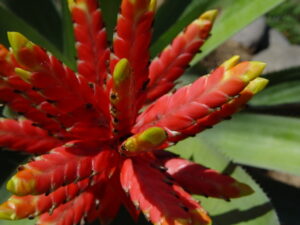
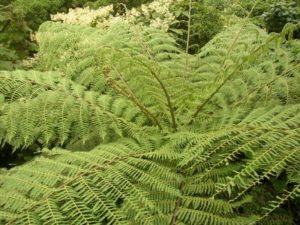
Ferns
- There are approximately 825 varieties of fern that grow wild in the Costa Rica rainforests
- The resurrection fern is perhaps one of the most interesting plants in Costa Rica nature, as it can survive long periods of drought by closing up, withering, and turning brown.
- There are eight species of tree ferns, including the leather leaf fern and one kind of fern with prickly bristles. Tree ferns can grow up to 60 cm in diameter and up to 12 meters in height.
Bromeliads
- The majority of bromeliads in Costa Rica are air plants, but some also grow in the ground.
- Pineapples are terrestrial bromeliads.
- In Costa Rica, the Ceiba tree is where the majority of bromeliads grow.
- Bromeliads are the brightly flowered spiky leafed plants growing on the trees in Costa Rica.
- Costa Rica has more than 2,000 different species of bromeliads, and is known for being the richest deposit of bromeliads in Central America.
- The majority of Costa Rica’s bromeliads are found in the rainforests and higher-altitude cloud forests such as Monteverde.
- Many bromeliad leaf surfaces are covered with small, flat scales attached in the center, know as a rosette. The rosette functions as a small reservoir to collect water and rainfall in Costa Rica.
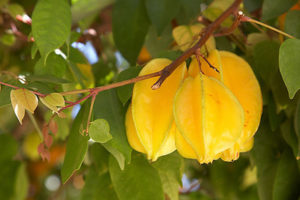
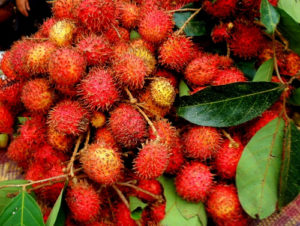
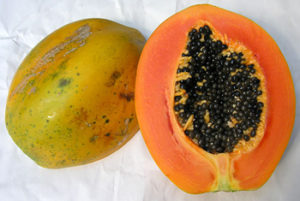
Costa Rica Trees
Many species of trees coexist in the rainforests, cloud forests, mountainous and costal landscapes of Costa Rica.
- The national tree of Costa Rica is the Guanacaste Tree (Enterolobium cyclocarpum). Its overhanging mushroom like cap of leaves is easily recognizable, standing out against the arid Guanacaste landscape.
- An abundance of palm trees line many Costa Rica beaches.
- The Ceiba tree is one of the fastest growing trees in the world and is widely used in Costa Rica for reforestation projects. It can grow up to 13 ft in a year reaching a maximum height of 200 ft. Indigenous Costa Ricans believe the Ceiba tree to be sacred.
- Almond, Balsa and Cedar trees can also be found in Costa Rica.
Costa Rica Fruits
Costa Rica has a wealth of tropical fruits, and if you are visiting this beautiful country on vacation, make sure you take the time to sample some healthy local treats.
- The more familiar Costa Rica fruits which you might have tried back home include mangoes, lemons, bananas, oranges (that are not orange but green), papaya, pineapple, cantaloupe and watermelon.
- Other popular fruits native to Costa Rica include Guavas, Cas, Tamarindo, Passion fruit, Avocado, , Pejibaje, Jocotes, Mammon chino, and Carambola (star fruit)

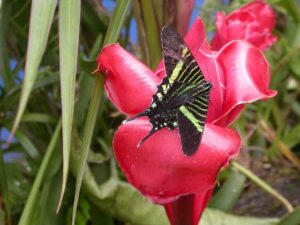
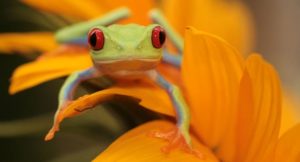
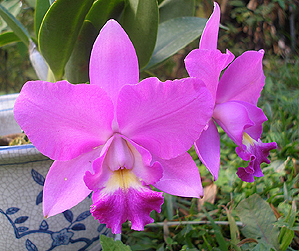
 +1 888-818-2097
+1 888-818-2097
 +506 8932-4731
+506 8932-4731